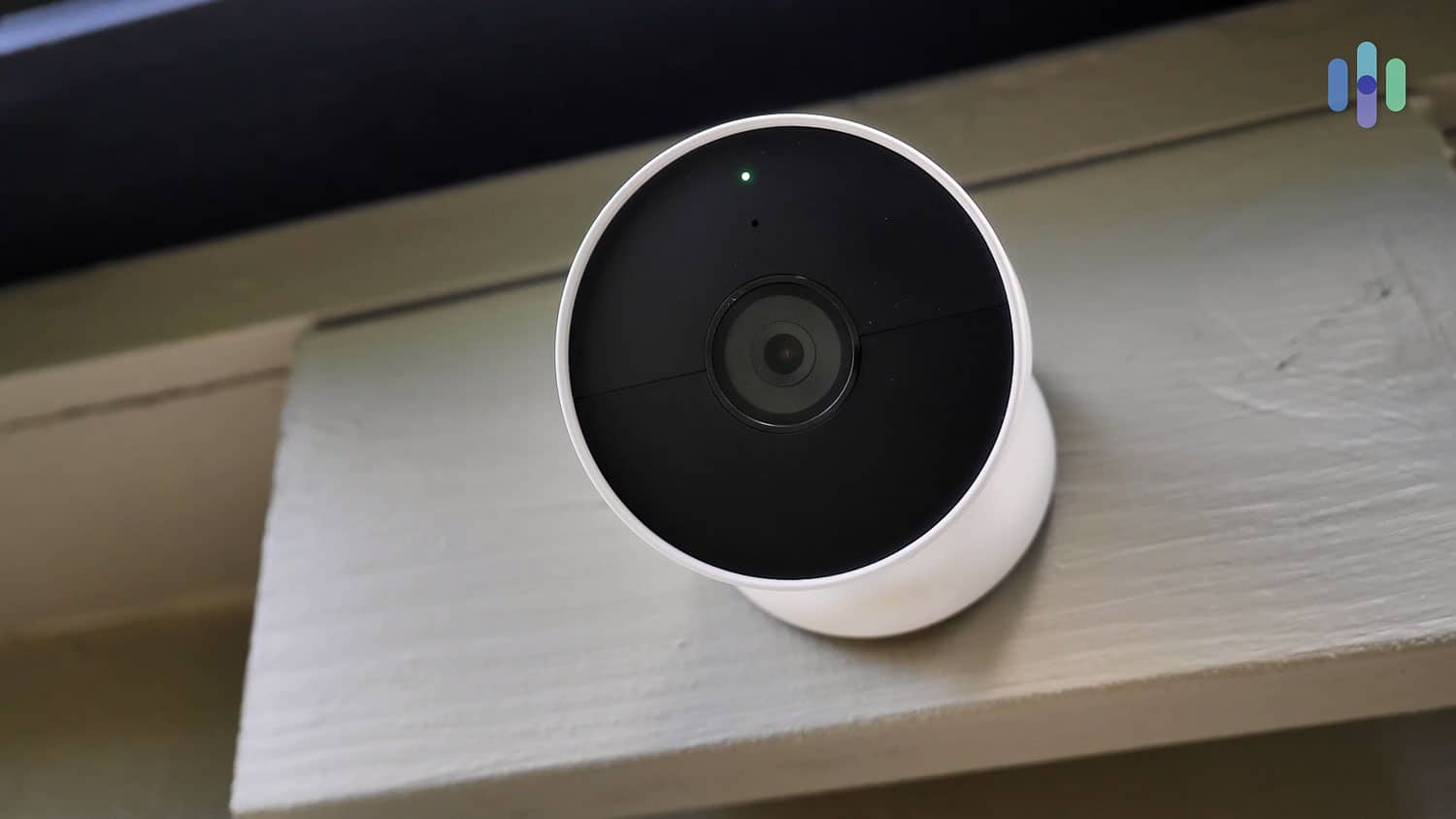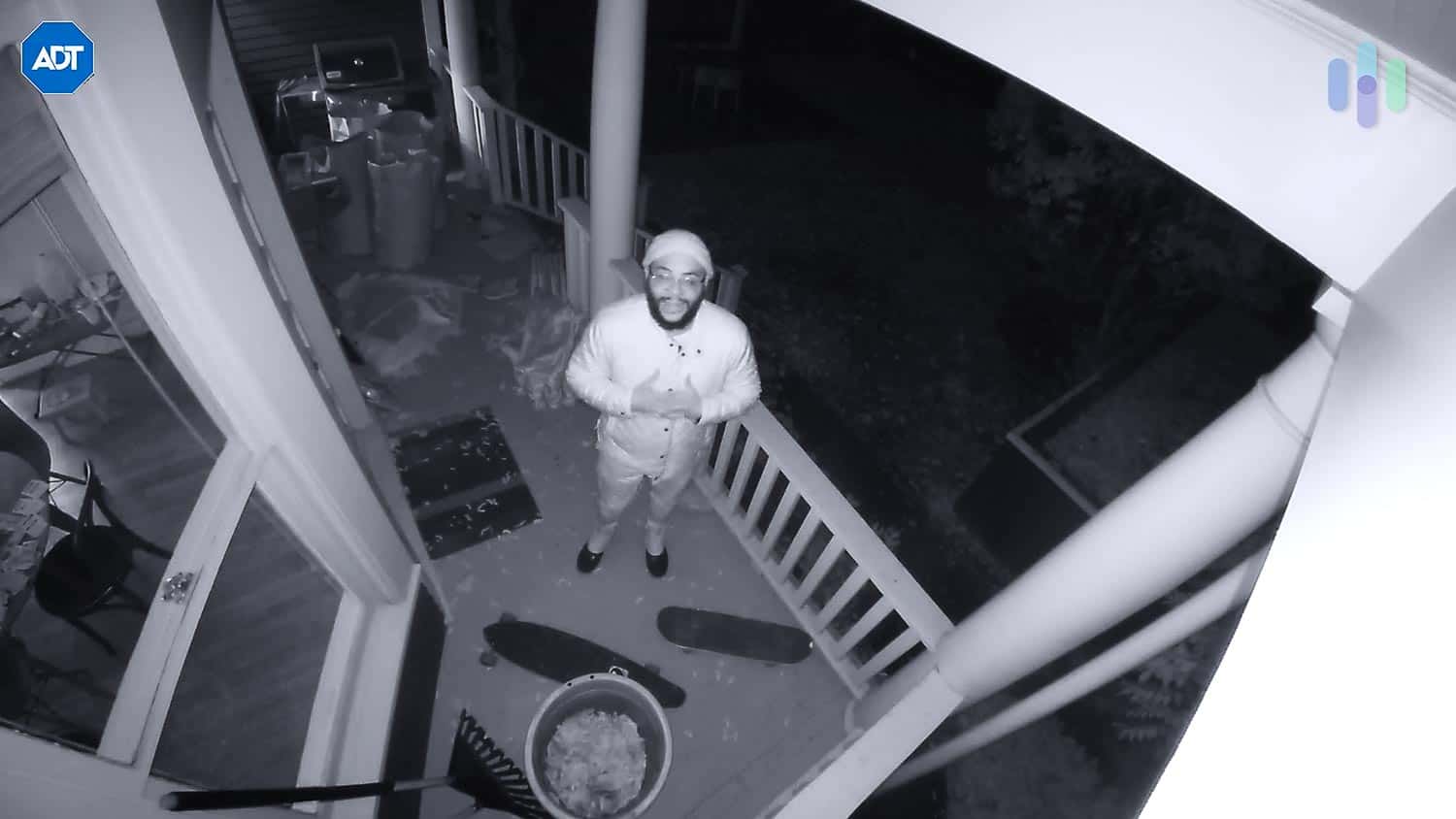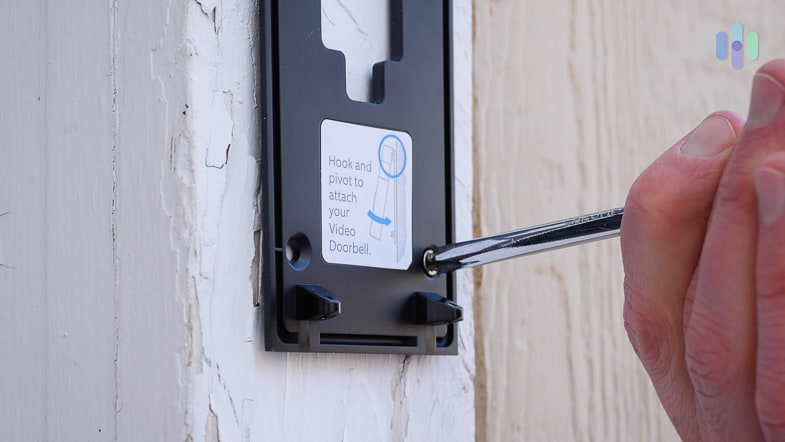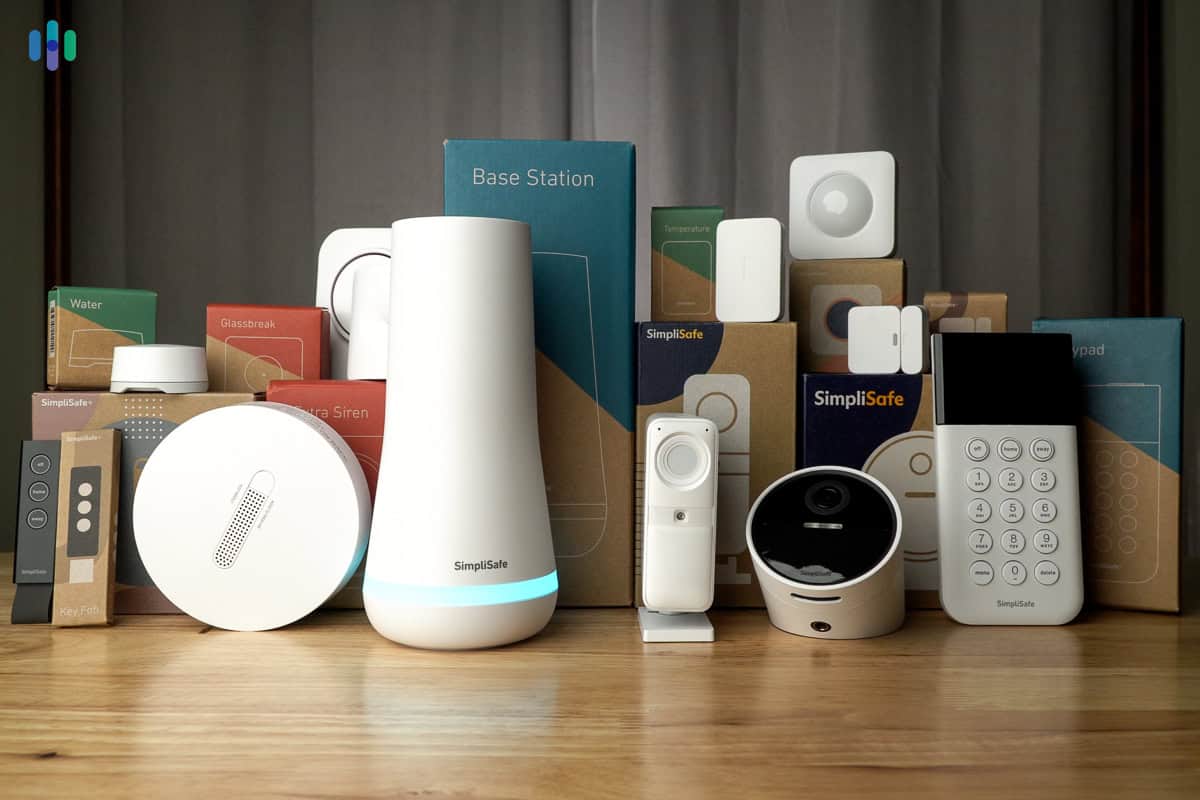ADT vs. Ring Alarm: Comparing Old vs. New
ADT and Ring approach home security differently, so we tested them both to see which is better and ADT won.


 Aliza Vigderman, Senior Editor, Industry Analyst
&
Aliza Vigderman, Senior Editor, Industry Analyst
&
 Gabe Turner, Chief Editor
Last Updated on Dec 13, 2024
Gabe Turner, Chief Editor
Last Updated on Dec 13, 2024

- Professional installation available for all systems
- 24/7 monitoring centers nationwide
- 150+ years of home security innovation

- Professional monitoring add-on available for $10 per month
- No contract required
- Amazon-owned company

When it comes to home security, ADT and Ring are two of the biggest names in the game. That said, they are worlds apart when it comes to approach. ADT is definitely more of a traditional system — with some interesting exceptions — while Ring brands itself as the next generation of home security, focusing mainly on DIY installations and cutting-edge equipment.
Both offer state-of-the-art home security systems, easy-to-use apps, and a wide selection of security cameras, but which can protect your home better? In this comparison, we put Ring and ADT side-by-side based on our experience living with each system for over a month. We’ll assess their equipment, monitoring service, and pricing, among other critical factors. Let’s get to it.

ADT vs. Ring Alarm: In A Nutshell
Let’s start with a high-level overview of how ADT and Ring stack up against each other. Even from here, it’s clear that the two companies couldn’t be more different.
| Features and details | ADT | Ring Alarm |
|---|---|---|
| Installation | Professional | DIY |
| Monitoring | Professional | Self-monitored or professional |
| Monitoring contracts | 3 years (2 years in California) | Month to month |
| Cost of equipment | $350 and up | $200 and up |
| Cost of professional monitoring | $30 per month and up | $20 per month |
| Security system control options | Touch-screen panel, app, voice control | App, remote keypad, voice control |
| Smart home support | Z-Wave, Alexa, Google Assistant, and direct integrations | Z-Wave, Alexa, and Google Assistant |
| Supported cameras | ADT and Google Nest cameras | Ring-brand cameras |
| Cost of cloud storage | Included in highest monitoring plan | $10 per month |
| Money-back guarantee | 6 months | 30 days |
Do ADT and Ring Have Similarities?
Although both companies are aiming to protect your home, the similarities between them are scarce.
Let’s start by talking about their equipment. Both home security systems rely on wireless sensors to detect intrusion, support environmental hazard sensors, and offer state-of-the art security cameras with AI-powered alerts. So far so good.

As far as monitoring goes, ADT and Ring both offer 24/7 professional monitoring with emergency dispatch for police, fire, and medical emergency services.
We also found the security cameras and video doorbells with each provider to work exceptionally well. They allowed livestreaming and video recording, and they both integrate with Alexa, Google Assistant, and other third-party home-automation products.
How Are They Different?
Beyond those minor similarities, ADT and Ring Alarm almost never see eye to eye. Let’s have a look at their key differences.
- Equipment: ADT offers a wider range of equipment, including smart-home devices such as smart thermostats, smart lights, and smart locks. It’s possible to integrate similar third-party smart devices into the Ring Alarm system, but Ring doesn’t make or sell them. That said, we had a bigger selection of cameras and doorbells from Ring.
- Installation: Although they now offer a DIY option, ADT still emphasizes its professional installation service. This is a new development for ADT that happened in the past year. Ring, on the other hand, started its life as a DIY company so its system has been designed from the ground up to be easy to install by yourself.
- Monitoring: ADT requires most customers to sign a three-year monitoring contract. We found out that the contract can be avoided if we installed the system on our own. Ring doesn’t require a contract no matter what, so you can pause monitoring anytime you want.
- Monitoring contracts: ADT requires each customer to sign a three-year monitoring contract. Ring doesn’t require a contract, so you can pause monitoring anytime you want.
- Security cameras: Ring is best known for its dozens of top-of-the-line security cameras and doorbell cameras. ADT’s cameras are also of great quality, since they are from Google Nest. However, only three camera models and one doorbell camera are available.
There’s lots to discuss in order to see which is better, so let’s get into the details of our experience with ADT and Ring installed in our home.
ADT and Ring Features and Tech
When it comes to securing your home, it’s vital to choose technology you can rely on. We’ve tested ADT and Ring Alarm systems before, and we know both are reliable. So, we’re going to go over exactly how ADT and Ring Alarm protected our home.
ADT Features and Tech
ADT used traditional home security equipment combined with modern features and tech to protect our home. It all starts with a touch-screen control panel, which controls and monitors every sensor in the system. Think of it as the brains of the system, responsible for relaying alarm signals to you and ADT’s monitoring center.

ADT’s touch-screen panel is cellular-ready, which means it can use cellular signals to send alerts when its primary communication is out. Our Wi-Fi tends to drop out during storms, so the cellular backup came in handy on more than one occasion.
Side Note: Newer ADT systems no longer include a touch screen panel, but uses a physical keypad built into a cylindrical base station. While we do miss the touch screen, the new base station looks sleeker and is more versatile to different placement options.
The control panel couldn’t do anything on its own to protect our home, though. That’s where the wireless sensors and devices come in. ADT offers a wide range of accessories and components, like motion sensors, entry sensors, glass break sensors, smoke alarms, and more. We bought one motion sensor and three entry sensors for our home. Each component connected to our control panel monitoring our home for activity. Adding more sensors or alarms was as easy as ordering them online and adding them to our control panel.
We could also add home automation devices, but we controlled them mainly through the ADT app. The first automation we set up was lowering the temperature in our house when we armed our system. It made a noticeable impact on our heating bill during our month of testing. We also paired ADT with Google Assistant for voice AI since we also bought Google Nest Cams, but it can be paired with Alexa too.
Ring Alarm Features and Tech
Ring Alarm is more app-centric. Most of the core functionalities are easiest to access in the app, from arming and disarming the system to naming and designating sensors.
That said, Ring Alarm systems also have a central device called a base station — essentially a hub — that connects the system to the app. Unlike ADT’s touch-screen panel, though, the base station lacks an interface. Instead, we had to use a wireless keypad to arm and disarm the system when we weren’t using the app.

The app powers everything from the Ring Alarm to Ring’s video doorbells and security cameras. It’s a well-designed app though so that’s not a complaint. In it, we could watch our live feeds, check the status of our system, review recorded clips, and pick what happens when we arm our system.
Much like ADT, Ring Alarm has a cellular chip, but its main communication method is Wi-Fi. However, activating the cellular chip requires a professional monitoring plan, starting at $20 per month. If you plan to self-monitor Ring, you need a reliable internet connection to ensure all alerts go through but we always recommend professional monitoring.
More bad news, Ring’s equipment selection is more limited compared to ADT. It does offer the usual sensors, like motion sensors, entry sensors, and glass-break sensors, but it lacks the more nuanced types of sensors that ADT offers, such as garage door sensors. Additionally, Ring Alarm’s sensors for hazard monitoring don’t actually detect smoke and carbon monoxide. They detect the alarm sound coming from smoke and CO detectors, so we still needed to keep our old smoke detectors up in our home.
Tip: For a full list of Ring home security equipment, read our Ring Alarm review, in which we tested a basic Ring Alarm kit along with a few extra devices.
Ring’s strongest tech asset is its wide selection of security cameras and doorbell cameras. Ring started as a doorbell camera brand, after all. The cameras seamlessly connect to the Ring Alarm, and we could monitor our home from anywhere with the Ring app. Since we subscribed to the cloud storage plan, the cameras automatically recorded motion clips we could review up to 180 days after the clip got recorded.

Who’s the Winner?
Based on our experience testing both systems, ADT is a little better when it comes to features and tech. It offers more control options and a larger selection of equipment with more highly specialized functionality. For a little more information, check out our ADT review.
ADT and Ring Security Cameras
ADT and Ring believe in the power of security cameras as crime just like we do,1 and both offer several video surveillance options.
ADT Security Camera Options
With ADT, we got Google Nest Cams. We separately reviewed ADT’s security cameras, so head on there if you want more details. But essentially, the Nest Cams are some of the smartest security cameras on the market right now.

When we reviewed Nest Cams, we noted how great they are with advanced features such as person detection and facial recognition. They even used AI to learn the faces of people who frequently visited our home. This meant our alerts told us who was at our house too which helped us decide which notifications we needed to pay attention to. When we had a friend drop off their drill for us to borrow, our Nest Cam told us when they arrived. Facial recognition let us know it was our friend and not a stranger.
FYI: To enable facial recognition on the Nest Cams, you’ll need a Nest Aware subscription starting at $8 per month but you don’t need to pay that additional fee if you have an ADT system. ADT monitoring plans that support security cameras include Nest Aware in their monthly rate.
The current Nest camera lineup includes:
- Nest Cam Battery (here’s our Nest Cam Battery review for more information)
- Nest Cam Wired
- Nest Cam With Floodlight
- Nest Doorbell (wired and wireless) (here’s our Nest Doorbell review for more information)
Given that ADT and Google Nest charge the same amount for these cameras, we recommend buying through ADT to get the option of ADT monitoring.
Ring Security Camera Options
Ring started as a brand offering a handful of doorbell cameras, which later expanded into security cameras and then security systems. As you’d expect, the company put its security camera expertise to good use.
We found all of our Ring cameras reliable, and they often include a wide swath of security features beyond what we normally see in other security cameras. The Ring Spotlight Cam we reviewed, for example, came with two integrated motion-sensitive spotlights.

Like most cameras besides the Google Nest Cams, Ring cameras lack facial recognition. Although, they could still distinguish people from other moving objects which kept our false alerts down. Ring’s premium cameras use radar-assisted motion detection and activity zones to fine-tune our alerts even more.
The current lineup includes:
- Ring Indoor Cam
- Ring Stick Up Cam
- Ring Spotlight Cam
- Ring Floodlight Cam
Ring also remains great at making doorbell cameras, as you can see in our Ring video doorbell review. While testing it, we could speak to our guests through our smartphone. We used that feature to spook away a porch pirate once while we were at work.
The cameras use the same app as the security system, which means when we received an alert from one of our Ring Alarm sensors, we could immediately check the live feed of the closest camera.
Who’s the Winner?
The security camera category is a toss-up between ADT and Ring. Since ADT has partnered with Google Nest, a whole world of AI-based indoor and outdoor surveillance has opened to customers. With Ring, you get the full features of the cameras on the Ring app. This is a tough one to call, but we’d give the edge to ADT for all around quality and professional installation.
Monitoring: Professional or DIY?
Hardware isn’t the only thing you should look at when comparing security systems. You should also consider how it’s monitored, and ADT and Ring are completely different in this area.
ADT requires professional monitoring for most systems, which means your system will be linked to its monitoring facilities where trained operators will monitor for alerts 24/7. If an emergency occurs, ADT operators can dispatch police, fire, or medical response.

The downside of professional monitoring is that there’s a monthly fee associated with it. ADT prices its monitoring plans from $29.99 to $44.99 per month depending on the features. The $44.99 per month plan includes Nest Aware too. Basic monitoring with smartphone access will cost you the minimum fee, while home automation, video monitoring, and Nest Aware features and cloud storage comes with the premium $44.99 per month plan. We needed to sign up for a three-year contract, but ADT keeps moving away from requiring contracts. Now, ADT only requires a contract for financing or to take advantage of some sales.
On the other side of the coin, Ring doesn’t require professional monitoring. You can self-monitor without monthly fees. The downside is that you’ll be the one to respond to every alert. You’ll have to verify the alerts yourself and then call emergency services if necessary. We know we don’t have time for that so we signed up for professional monitoring.

Professional monitoring from Ring costs $10 per month, but it requires the Standard or Premium Protect plan. That means it ends up costing at least $19.99 per month if bundled with the Standard plan or $29.99 per month when bundled with the Premium plan. We found the Standard plan to offer enough for us since it added core capabilities like cellular backup and cloud storage for unlimited cameras.$20 per month for the Ring Protect Premium plan.
There’s also a $99 per month virtual security guard plan (professional monitoring for security camera) that can be added in the same way as professional monitoring, but we think it’s overpriced considering SimpliSafe offers a similar service for $32 per month. Take a look at our SimpliSafe review, it offers a good balance between Ring and ADT. Unlike ADT, Ring never requires a contract.
Who’s the Winner?
From a budget perspective, Ring is the winner because you have the option to self-monitor for free or pay $20 for professional monitoring. When it comes to features, reliability, and whole-home protection, however, ADT is the clear winner.
Installation: Professional or DIY?
Another decision you’ll have to make is whether to have your system installed by the pros or do it yourself.
ADT used to require professional installation with a base installation fee of $99. They no longer require it, but if you choose to have it installed by in-house ADT technicians, that $99 fee or more still applies. The benefit is that you won’t have to lift a finger. ADT will take care of everything, and then give you a walk-through of the system once it’s installed.
We went with professional installation so our ADT technician could choose the best locations for our equipment to maximize our system’s coverage. Although, we have tested ADT Self Setup before. We were surprised to find that it offers the same equipment as the professionally installed ADT system, which means it’s technically just as good; you just have to make sure it’s properly installed.
The installation service is covered by a six-month money-back guarantee. If anything goes awry because of faulty installation and ADT can’t fix it within six months, you’ll receive a full refund. That’s the industry-best in terms of money-back guarantees and one of the reasons ADT is our favorite professionally installed security system.
Did You Know: We also selected ADT as one of the best security systems for new-construction homes because of its top-notch professional-installation service.
For Ring users, installation is do-it-yourself. Ring will ship you a security system with instructions for how to install it, but you’ll have to take care of everything yourself. Installation is free and there are no activation fees either. Once you’re done installing the system, it will work immediately. There’s a professional installation option, but Ring outsources that service to OnTech. We prefer ADT’s in-house technicians to the third-party technicians that Ring offers.

Who’s the Winner?
This is a matter of preference. If you want professional installation, there are not a lot of options better than ADT. If you prefer to do things yourself or if you want to avoid installation fees, Ring Alarm’s DIY setup is the way to go, although ADT’s DIY system is quickly catching up.
Customer Service and Support
Customer support is one of the often ignored factors that actually has a huge impact on your overall home security experience. We always end up having to contact support at some point no matter which system we’re using, so picking a company with good after-sales support is necessary.
Customer service is a top priority for ADT. Yes, there are lots of negative customer reviews online and our experience with ADT support is hit or miss, but the fact that its customer support is available 24/7 invites confidence. We used their live chat for quick questions and called them when we needed more technical guidance.

We also like that ADT has dealers all over the country, so it won’t take too long to provide service if your system needs repairs.
Ring, on the other hand, has a strong online presence. Even though its live-chat support is not available 24/7 (only 5 a.m. to 9 p.m. MT), there are helpful tutorials on the Ring website and the phone line is available 24/7. Between those two options, we were always able to troubleshoot our issues on our own. There’s no need to wait for a technician to show up.
All Ring products are covered by a one-year limited warranty and a 30-day refund policy.
Who’s the Winner?
Although both companies offer good customer support and we could always get the help we needed, ADT wins by a hair thanks to its 24/7 live chat option. When it’s late at night and we need help with our security system, we don’t like having to pick up the phone to get our system issues resolved like we had to with Ring.
Final Words: ADT or Ring?
Our pick is ADT. We like professional monitoring and the perks of security system installation done by the pros. ADT’s security system tech is also superior to that of Ring Alarm. And when it comes to monitoring, ADT was faster and more reliable during out tests.
Even though ADT fits our preferences better, ADT and Ring Alarm are both exceptional security systems with top-notch features and tech. It all comes down to your preference.
Choose ADT if you want:
- Professional installation and monitoring.
- A more complete smart-home experience.
- An easy-to-use system with loads of control options.
- Cellular monitoring and a reliable professional monitoring network.
Go with Ring Alarm if you want:
- DIY setup.
- Flexible monitoring options.
- Affordable equipment and monitoring.
- Security camera–heavy setup.
FAQs on ADT and Ring
Still having trouble choosing? These FAQs (and our answers) may help.
-
Which is better at integrating with third-party home-automation products: ADT or Ring?
Both ADT and Ring use Z-Wave to integrate with third-party home-automation products, but ADT supports more types of products than Ring. Ring is currently limited to smart locks, smart smoke and carbon monoxide detectors, smart dimmers and switches, and a few smart thermostats. ADT has wider support for smart lighting systems, garage door controllers, and more.
-
Can Ring monitor ADT systems?
Ring doesn’t take over monitoring for other security systems. It monitors only Ring-branded systems.
-
Can ADT monitor Ring Alarms?
ADT can take over monitoring for other systems, but it currently doesn’t support Ring Alarms. Ring uses proprietary equipment that only its partner monitoring center has access to.
-
Can I pair Ring security cameras with ADT?
No. ADT works only with security cameras from its own lineup and Google Nest cameras. Ring security cameras won’t pair with ADT systems.
-
Do either ADT or Ring Alarm offer video verification?
ADT offers video verification in its top-tier monitoring plan, which is also the required subscription if your security system includes security cameras. Similarly, Ring offers video verification and more – and by more we mean live monitoring of security cameras. That service, however, costs an additional $99 per month.

-
ADT. (2022). Do Surveillance Cameras Deter Crime?
adt.com/resources/do-surveillance-cameras-statistically-reduce-crime



